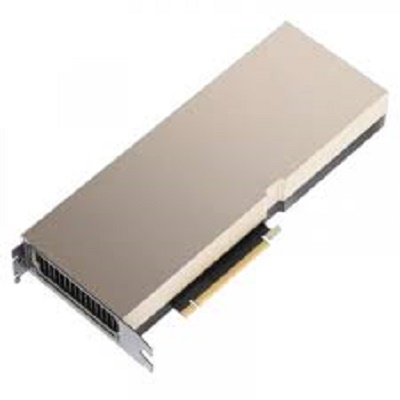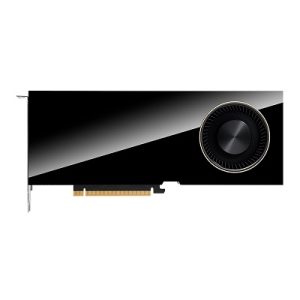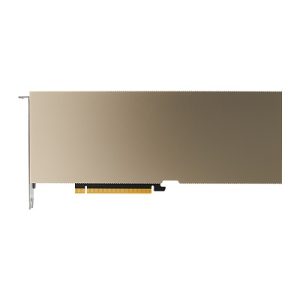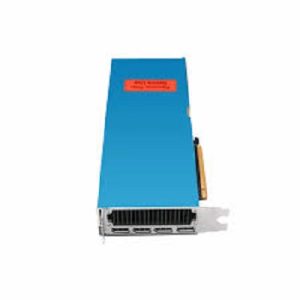NVIDIA A16 Enterprise 64GB 250W: Powerful Enterprise Virtualization in a Single GPU
The NVIDIA A16 Enterprise 64GB 250W is a virtualization powerhouse engineered to meet the demands of today’s remote workforces and cloud infrastructure. Built on the Ampere architecture, this GPU is optimized to deliver ultra-dense performance for VDI (Virtual Desktop Infrastructure), enabling seamless user experiences across multiple virtual desktops and workstations.
| Feature | Specification |
|---|---|
| GPU Architecture | NVIDIA Ampere |
| NVIDIA Third-Generation Tensor Cores | 160 total Tensor Cores (40 cores per GPU, 4 GPUs) |
| NVIDIA CUDA Cores (shading units) | 5120 total FP32 CUDA Cores (1280 cores per GPU, 4 GPUs) |
| NVIDIA RT Cores | 40 total RT Cores (10 cores per GPU, 4 GPUs) |
| Double-Precision Performance (FP64) | Not applicable |
| Single-Precision Performance | FP32: 4x 4.5 TFLOPS<br>Tensor Float 32 (TF32): 4x 9 TFLOPS, 4x 18 TFLOPS* |
| Half-Precision Performance | FP16: 4x 17.9 TFLOPS, 4x 35.9 TFLOPS* |
| Bfloat16 | Not applicable |
| Integer Performance | INT8: 4x 35.9 TOPS, 4x 71.8 TOPS* |
| GPU Memory | 64GB GDDR6 (16 GB per GPU, 4 CPUs) |
| Memory Bandwidth | 4x 200 GB/s |
| ECC | Yes |
| Interconnect Bandwidth | Not applicable |
| System Interface | PCIe Gen 4, x16 lanes |
| Form Factor | PCIe full height/length, double width (dual slot) |
| Multi-Instance GPU (MIG) | No support |
| Max Power Consumption | 250 W |
| Thermal Solution | Passive |
| Graphics APIs | DirectX 12.07, Shader Model 5.17, OpenGL 4.68, Vulkan 1.18 |
| Compute APIs | CUDA, Direct Compute, OpenCL, OpenACC |
Designed for High-Density Virtual Workloads
With a massive 64GB of GDDR6 memory and four independent GPU instances, the A16 is designed to serve up to 64 concurrent users with smooth graphics performance. This makes it an ideal choice for enterprises deploying scalable virtual environments across various sectors, from creative professionals to remote developers and secure enterprise infrastructures.
Maximize ROI with Unparalleled Efficiency
Running at just 250 watts, the NVIDIA A16 strikes the perfect balance between density and power efficiency. Businesses looking to consolidate workloads and cut operating costs while boosting performance will find this GPU to be a strategic investment. Its MIG (Multi-Instance GPU) support ensures guaranteed isolation and performance across virtual workloads without hardware conflict.
Ready for Cloud Gaming and AI-Enhanced Virtualization
The A16 doesn’t just meet the demands of traditional enterprise VDI—it’s also well-suited for modern workloads like cloud gaming, immersive 3D collaboration, and even light AI inference. When paired with high-performance enterprise GPUs like the NVIDIA A30 Tensor Core





Ludwig (verified owner) –
The product is firmly packed.
Giovanni (verified owner) –
Perfectly working machine.
Aadarsh (verified owner) –
Very fast delivery.
Ludwig (verified owner) –
Very fast delivery.
Vittorio (verified owner) –
The product is firmly packed.
Nina (verified owner) –
Very well worth the money.
Leif (verified owner) –
Perfectly working machine.
Aadarsh (verified owner) –
The product is firmly packed.
Lars (verified owner) –
Very well worth the money.
Wilhelm (verified owner) –
Perfectly working machine.